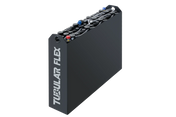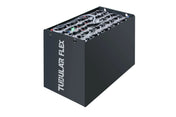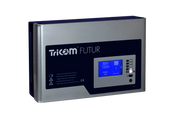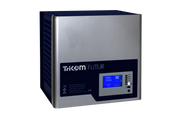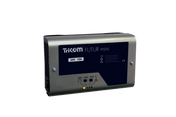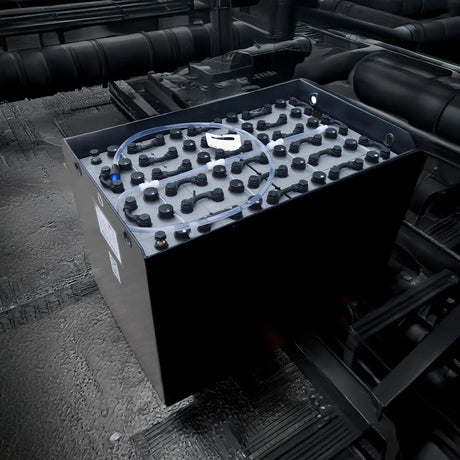Financing forklift batteries is a strategic decision with a direct impact on your operating costs and liquidity. Whether purchasing, leasing, or renting – each option brings its own opportunities and risks. This guide will help you find the best solution for your business and realistically assess the total costs.
Cost overview of financing options
The costs of forklift batteries vary significantly depending on the battery type and financing model. Lead-acid batteries are cheaper to purchase, while lithium-ion systems score highly for their efficiency and longevity.
| Form of financing | Battery type | Costs / month | Purchase price |
|---|---|---|---|
| purchase | Lead-acid | – | 4,500–10,000 EUR |
| purchase | Lithium-ion | – | 15,000–22,000 EUR |
| leasing | Lead-acid | 350–600 EUR | – |
| leasing | Lithium-ion | 800–1,200 EUR | – |
| Rent | 24V | 90–120 EUR | – |
| Rent | 80V | 270–300 EUR | – |
Total Cost of Ownership (TCO) analysis
Those thinking long-term should consider not just the acquisition costs, but also the total cost of ownership over several years. The TCO analysis reveals surprising differences between financing models.
| Financing model | TCO (5 years) |
|---|---|
| Rent | 16,680 EUR |
| Purchase (lead-acid or lithium-ion) | ~23,000 EUR |
| Leasing (lithium-ion) | 60,960 EUR |
Surprisingly, despite not owning the property, renting over five years is often the most cost-effective solution – especially because maintenance and service are usually included.
Detailed financing options
Purchase – Full Ownership
Purchasing a forklift battery is the classic choice for companies with long-term plans and available capital. They acquire full ownership and can manage the battery themselves for years to come.
Advantages: No ongoing installments, tax depreciation, and independence from contractual partners. Particularly profitable with intensive, long-term use.
Disadvantages: High capital commitment, own risk in case of failures and maintenance costs that must be borne by the owner.
Leasing – predictable installments
Leasing is suitable for those who want to conserve cash while also taking advantage of the latest technology. Monthly payments remain constant, making budgeting easier.
Advantages: Low initial investment, tax deductibility, flexible terms, and access to new battery generations.
Disadvantages: No ownership rights, longer contract duration, and higher overall costs over long periods of use.
| condition | Value |
|---|---|
| Duration | 24–86 months |
| Monthly rate | from 470 EUR |
| option | Residual value purchase possible |
Rent – Maximum flexibility
Renting a forklift battery is the most flexible solution when short-term availability is essential. It's particularly suitable for temporary projects, seasonal peaks, or testing new technologies.
Advantages: No capital commitment, maintenance and service included, immediate availability. Ideal for short-term requirements.
Disadvantages: More expensive than buying for long-term use, no ownership and dependent on the provider's availability.
Battery technology comparison
Lead-acid batteries
This proven technology is robust and cost-effective, but maintenance-intensive. It is suitable for simple single-shift operations.
Features: Charging time 8–10 hours, lifespan approx. 1,500 charging cycles, regular watering required.
Costs: Purchase EUR 4,500–10,000, annual maintenance EUR 720, energy consumption approximately EUR 800/year.
Lithium-ion batteries
Modern lithium technology boasts fast charging times and high energy efficiency. Ideal for multi-shift operations and intensive use.
Features: Charging time 1–3 hours, lifespan over 3,000 charging cycles, no maintenance required for irrigation.
Costs: Purchase EUR 15,000–22,000, maintenance EUR 240/year, energy consumption EUR 560/year.
Decision support based on usage scenario
Short-term use (less than 1 year)
Recommendation: Rent. Perfect for seasonal peaks, short-term replacement solutions, or test phases for new technologies.
Medium-term use (1–3 years)
Recommendation: Leasing. Ideal for growth or modernization, as predictable installments and flexible terms reduce investment risks.
Long-term use (over 3 years)
Recommendation: Buy. Instead of a new forklift battery, you can also opt for used or reconditioned models .
Maintenance and operating costs
Maintenance costs in comparison
Lead-acid batteries require regular maintenance, while lithium-ion systems are virtually maintenance-free. The differences are also noticeable financially.
| Battery type | Maintenance costs / year | Special features |
|---|---|---|
| Lead-acid | 600–800 EUR | Electrolyte refill, equalizing charge |
| Lithium-ion | 200–300 EUR | Automatic battery management |
Energy efficiency
With up to 30% higher energy efficiency, lithium-ion batteries save around €300 annually in electricity costs compared to lead-acid systems. This sustainably reduces operating costs and reduces environmental impact.
Tax aspects
purchase
Acquisition costs must be capitalized and depreciated over their useful life. Maintenance costs can be claimed immediately as business expenses.
leasing
Leasing payments are fully deductible as business expenses. Furthermore, leasing usually remains balance sheet neutral, which keeps the equity ratio stable.
Rent
Rental costs are fully deductible and do not require capitalization. This is particularly attractive for companies seeking to preserve liquidity.
Technology trends and future outlook
The market for forklift batteries is developing dynamically. Falling prices for lithium-ion systems and higher energy densities are making modern solutions increasingly attractive.
By 2024, prices for lithium-ion batteries had fallen by 20% . Experts expect the market to grow to over USD 10 billion by 2034—a clear indication of the ongoing technological shift.
Conclusion and recommendations for action
The optimal financing strategy depends on your individual application profile:
- Short-term: Rent for maximum flexibility
- Medium-term: Leasing for predictable costs
- Long-term: Purchase – especially of lithium-ion batteries – for maximum economic efficiency
Practical tip: Conduct your own TCO analysis before making your decision. This is the only way to realistically assess investment, maintenance, energy consumption, and tax implications.


